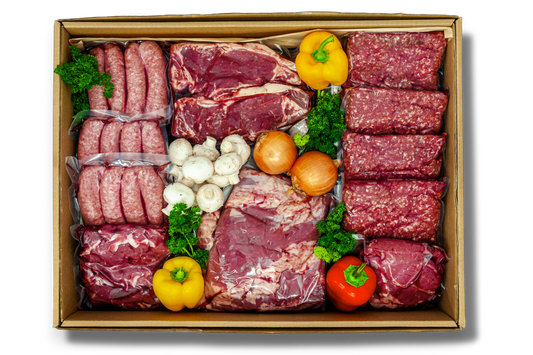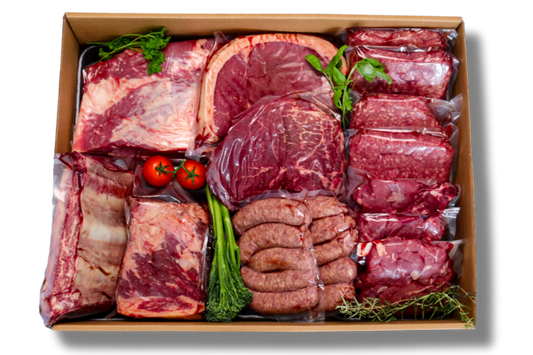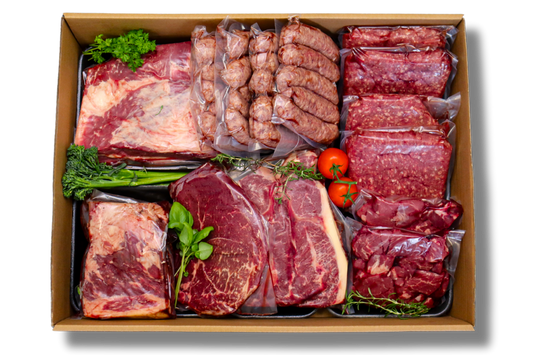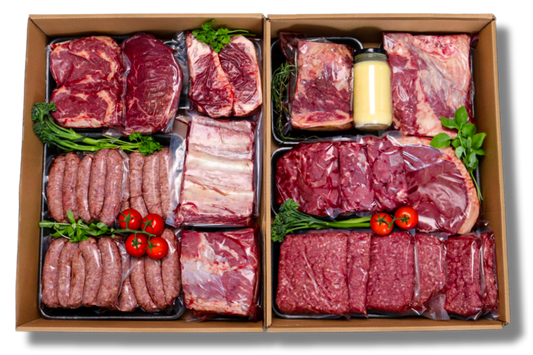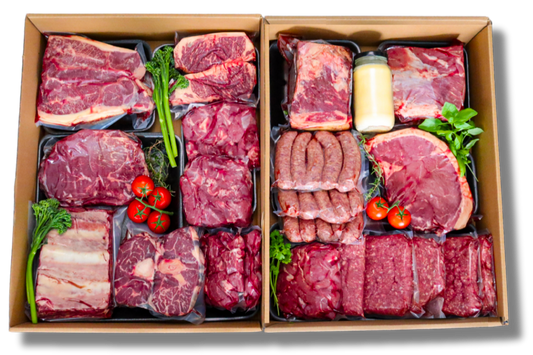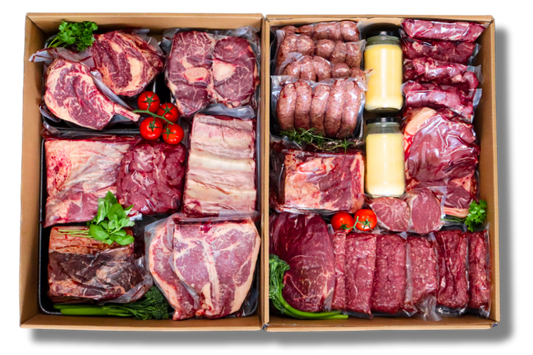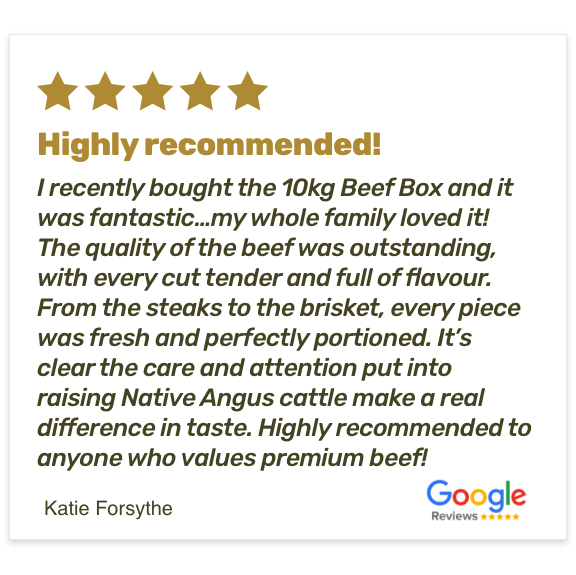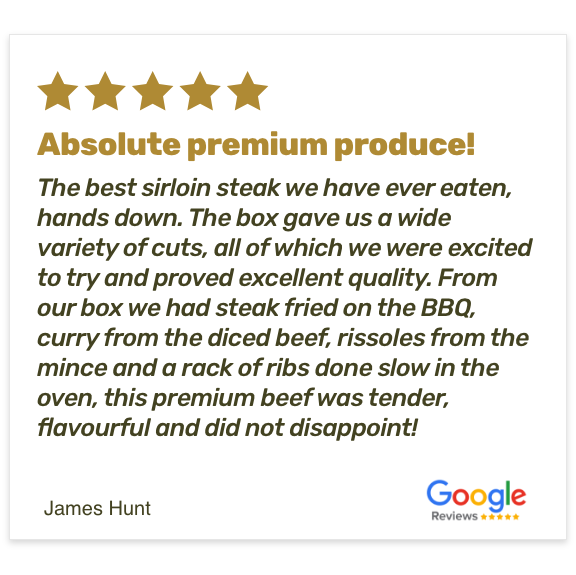It’s Not the Cow, It’s the How
There’s a lot of debate about cattle and their impact on the environment. But when it comes to the health of Australia’s grasslands, the science is clear: it’s not the cow, it’s the 'how'.
At Native Angus Beef, we raise our cattle using holistic grazing methods. These practices mimic the natural movement of wild herbivores that once roamed vast grasslands, grazing in tight herds and moving frequently. When done well, this kind of management restores landscapes, improves biodiversity and builds healthier soils, even in Australia’s driest and most brittle environments.

Seeing the difference
The photo above is from the Savory Institute and shows an African landscape with similar brittleness to much of inland Australia. The left-hand side has been grazed under holistic management. The right-hand side has been left untouched, with all animals excluded for years.
The results speak for themselves. Where animals are managed in a landscape (that is, the duration and density of their grazing follows the patterns of herbivores who have grazed for thousands of years), the land thrives and is capable of regenerating itself. Where animals are removed altogether, the landscape begins to collapse.
What do grazing cattle do for the land?
When cattle are rotated carefully through paddocks, they play a vital role in keeping ecosystems healthy. Here’s how:
- They graze down tall grasses, triggering regrowth and allowing new plants to flourish
- They trample the area and encourage decomposition of old pasture into organic material
- Their hooves disturb the surface, encouraging seed germination
- They carry seeds in their gut and fur, spreading biodiversity across the farm
- They fertilise the soil with their dung and urine
- They keep moving, which avoids compaction and overgrazing when managed well
These actions help regenerate pasturelands, protect ground cover, and feed the soil microbes that drive fertility from the ground up.
Why this matters in Australia
Grasslands cover around one-third of the planet’s surface. Many of these landscapes, including ours, exist in dry regions with fragile soils. Australia’s ancient, weathered soils are especially vulnerable to erosion and desertification, and in scant rain areas where the grasslands are poorly managed, the conversion to desert is happening at an alarming rate.
Poor grazing management, or removing animals altogether, can leave soil bare and vulnerable. Without the natural impact of herbivores, the land quickly becomes depleted.
But with intentional, managed grazing, cattle can help restore balance.
When cattle are moved thoughtfully across the landscape, they help maintain soil cover, stimulate plant growth, support soil microbes through root activity, encourage seed germination, cycle nutrients, and build biodiversity. Their presence, when managed properly, plays a vital role in keeping these ecosystems thriving.
At our family farm, Arrawatta Station, we’ve seen it firsthand. Since shifting to holistic grazing, we’ve noticed:
- A return of grass diversity
- An increase in insect and bird activity
- Better water retention and less runoff after rain
- Cattle that are calm, content and well-fed from diverse pasture
What this means for you
When you choose Native Angus Beef, you’re not just buying good quality meat. You’re supporting a way of farming that puts the health of the land, the animals and your family first.
We’ve seen the difference these practices make to our soil, our pastures and the broader landscape. We’re truly grateful for your support, which allows us to keep working towards healthier landscapes and a healthier planet.
By Susan Hendry, Co-Founder, Native Angus Beef
References:
- TEDxBigSky Presentation: "It's Not The Cow It's the How", presented by Bobby Gill, Savory Institute. Available here.
- "Grasslands are some of Earth's Most Underrated Ecosystems", By Lindsey Sloat, Mulubrhan Balehegn and Paige Johnson, Published May 2, 2025. Available here.
